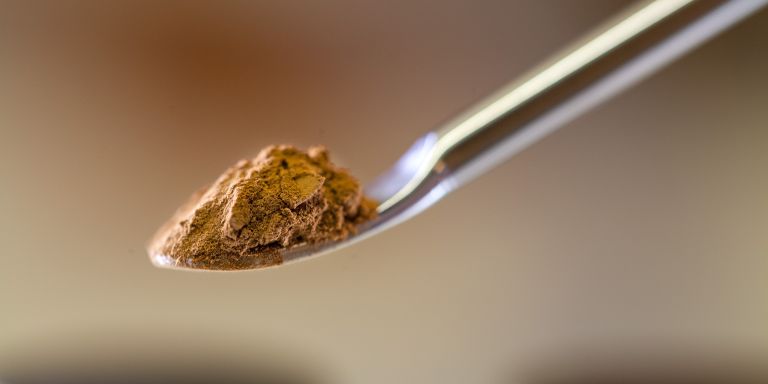
Lars Berglund
Professor of Wood and Wood Composites
Wallenberg Scholar
Institution:
KTH Royal Institute of Technology
Research field:
Nanomaterials from wood and nanocellulose


Wallenberg Scholar
Institution:
KTH Royal Institute of Technology
Research field:
Nanomaterials from wood and nanocellulose
“We’re trying to develop environmentally friendly materials – composites based on wood and nanocellulose – that are strong as well as light. We’re also interested in creating materials that are transparent and flexible, and that are capable of replacing oil-based plastics,” comments Berglund. Alongside his own research, he is director of the Wallenberg Wood Science Center (WWSC).
One material that has attracted considerable interest is transparent wood, offering potential for use in solar cells and windows. The research team has also used nanocellulose to create materials lighter and stronger than steel or aluminum. They are working in close collaboration with other researchers at WWSC.
At the biocomposites lab at KTH the researchers have a toolbox of chemical and molecular methods they are using to understand, control and modify nanofiber structures. They start with a chemical pulp of paper fibers from the pulp and paper industry, for example. They then use special enzymes to make the fibers disintegrate into individual nanofibrils. There are up to 40 million fibrils in a single cellulose fiber.
“We can then use the suspension of fibrils in water to make nanopaper, composite materials, foam materials and gels, for example. Controlling structures at the nanoscale is extremely difficult, but we keep developing methods for how to do it, so that we can impart completely new properties to these materials,” Berglund explains.
“The Scholars project is unique in that we can adopt a truly long-term approach, and address fundamental questions about nanocellulose and nanocomposites.”
He is conducting a five-year project as a Wallenberg Scholar, in which he will be continuing his work on understanding and controlling the structure of nanocellulose.
“This project mainly involves basic research coupled with long-term efforts to achieve scientific breakthroughs. It will also enable us to study cellulose in other plants.”
Completely different physical phenomena and states occur at the nanoscale, compared with the scale around us in our daily lives, where we can see and manage materials without the need for advanced microscopes.
“A material has a span of properties it is capable of acquiring. Nanotechnology enables us to use these miniscule components in cellulose fibers, and to control the nanostructures, thereby broadening the span. We can either give the material new properties or improve the ones it already has.”
In the open-plan office layout used by the research team sits one of the postdocs, making atomic-scale simulations of cellulose fibrils on his computer. The aim is to understand nanostructures and physical properties, e.g. how the fibrils dissolve in water. This requires a combination of modeling, simulation, and experimental polymer physics.
“The grant we have received enables us to devote time to theory and modeling as well, which is a little harder to justify in applied projects. This will enable us to gain a more fundamental understanding of cellulose,” Berglund says.
Most of the work is being carried out at KTH Royal Institute of Technology, but the researchers have also enlisted the help of synchrotron light to study nanostructures in the cellulose fibrils.
“The new Max IV synchrotron unit in Lund will be a great asset,” Berglund enthuses.
Growing environmental awareness and engagement is a key driver of the Swedish and international initiatives to develop nanocellulose and new biocomposite materials. Berglund explains:
“Environmental problems can no longer be ignored – all the plastic in seas and oceans, for example. There is now a huge demand for greener materials and products.”
Biodegradability and recycling of nanocomposites is a key issue in the project. The researchers want to use their chemical tools to control degradation and to facilitate recycling. In the lab they are testing various concepts in order to understand mechanisms for what works and what does not.
“One challenge we face is that when cellulose is combined with other materials, such as active nanoparticles, polymers or plastics, those materials need to be environmentally friendly too. So we need to manage the whole process in a clearly defined way, including how these materials are to be recycled,” Berglund says.
There is now much more research on nanocellulose than when Berglund started his work at KTH in the early 2000s. The pulp and paper industry’s interest and engagement have also grown considerably, and the materials in question have started to be commercially viable.
“This is now a huge scientific field, which means that more originality is required of our research. One approach we are using to generate new ideas is to use chitin – the counterpart of cellulose in crustaceans and insects. There are many similarities between cellulose and chitin, but also differences, which may give us new ideas. For our part, it’s mainly a question of understanding how nature creates its multifunctional materials. But chitin also offer potential for biomedical applications, for instance, because it can have antimicrobial properties.”
Text Susanne Rosén
Translation Maxwell Arding
Photo Magnus Bergström